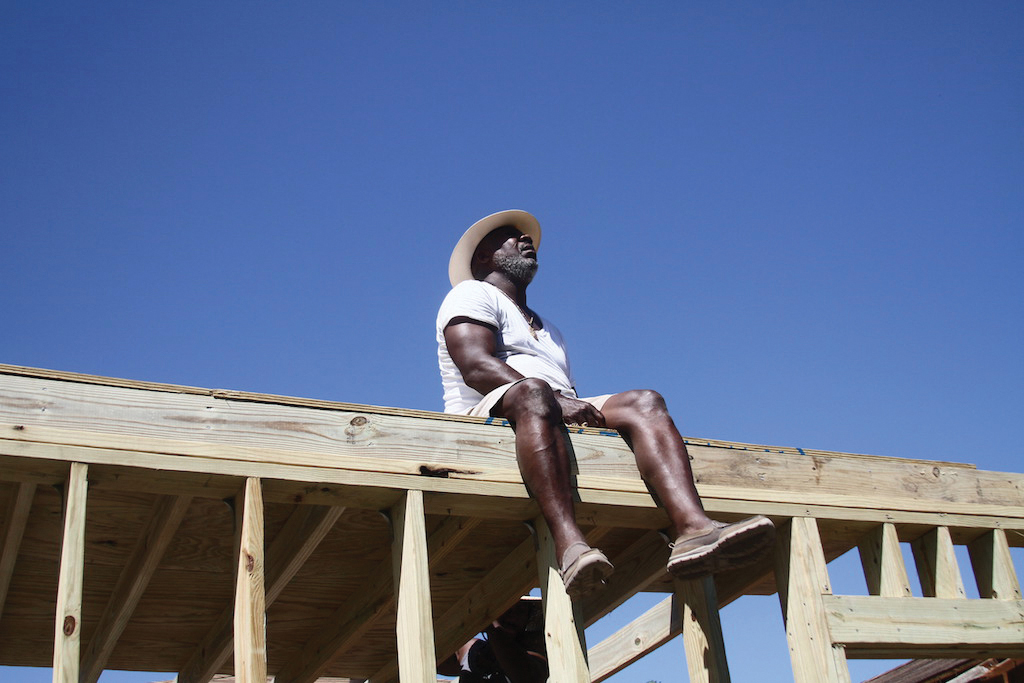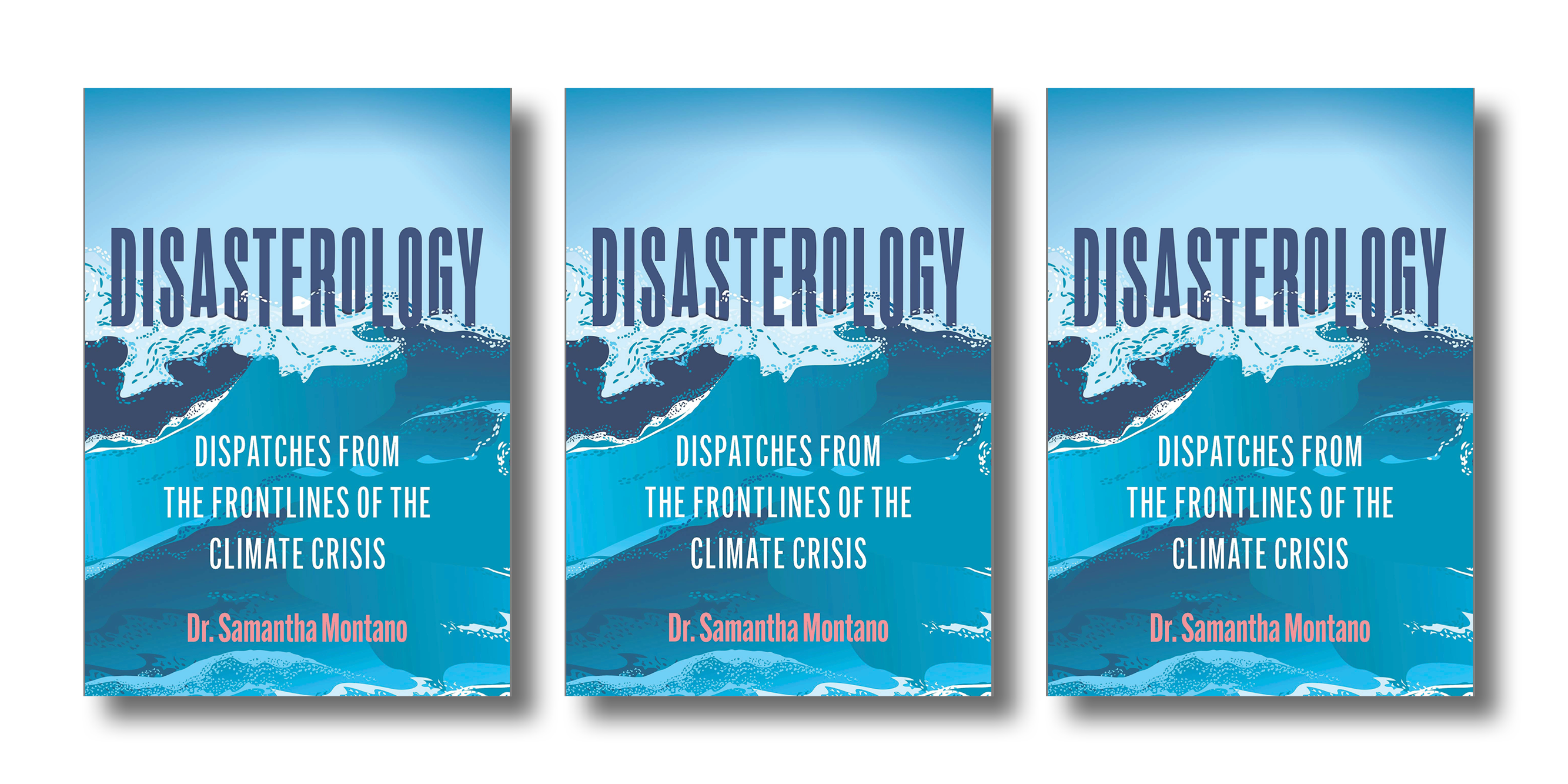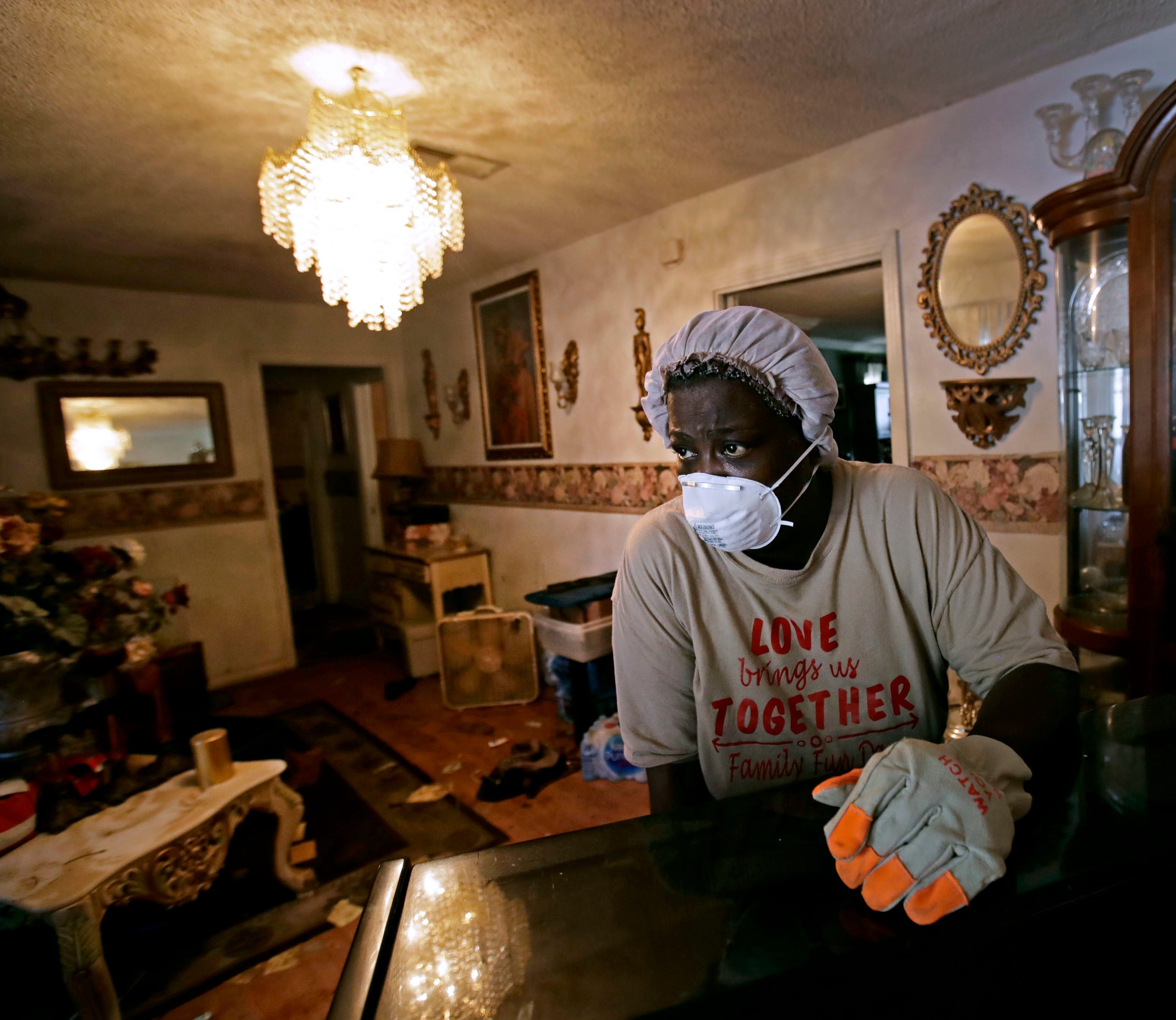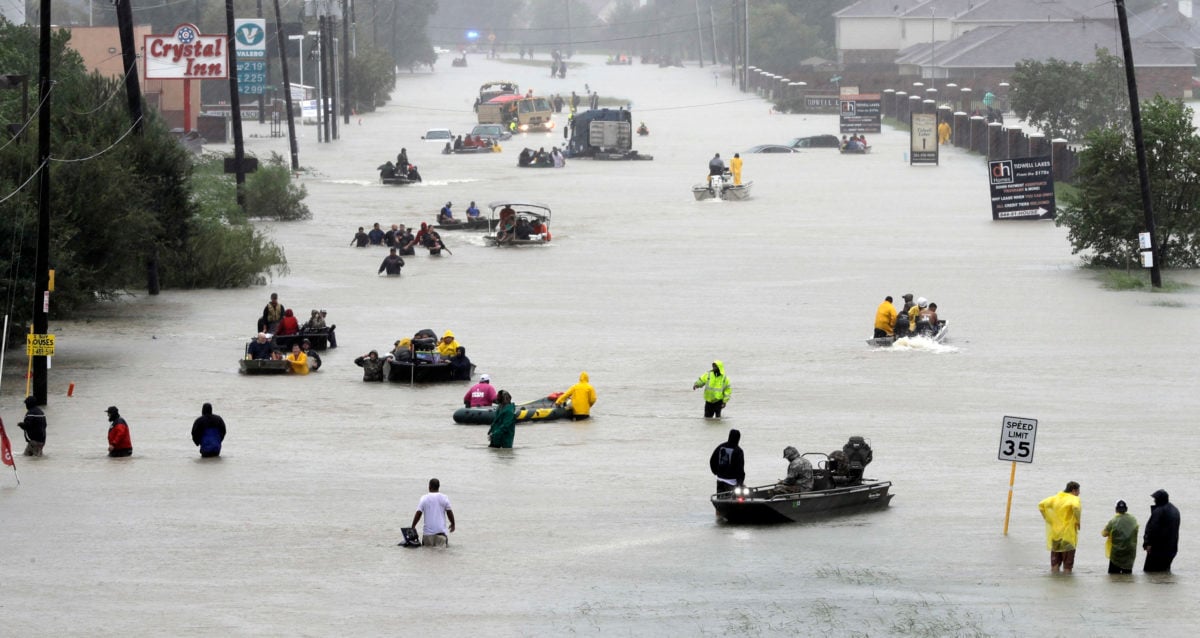
The Next Census Could Determine the Future of Port Arthur
If a city’s population drops below 50,000, it’s no longer considered an urban area. This different designation means it could lose some of the federal dollars directed toward larger metropolitan areas.

A version of this story ran in the March / April 2020 issue.
Above: Flooding in Port Arthur during Hurricane Harvey.
The 2020 census will almost certainly reshape the face of politics and power in Texas. State legislative districts, as well as their congressional counterparts, will be redrawn; federal dollars for everything from highways and wastewater services to Medicare and food stamps will be reallocated.
This is why it’s imperative to obtain accurate population counts. To do that, the census follows a fairly basic principle: People are counted at their primary place of residence. For a city like Port Arthur, which sits along the hurricane- and flood-prone Gulf Coast, that could spell trouble.
In the past three years, Hurricane Harvey and Tropical Storm Imelda flooded large swaths of Southeast Texas and displaced hundreds of residents. “[Certain neighborhoods] in Port Arthur look like ghost towns—like something out of the Twilight Zone,” Hilton Kelley, a local environmental advocate, told the Observer. The Observer wrote about how many Port Arthur residents hadn’t recovered from Hurricane Harvey one or even two years later.
Some homeowners are stuck in limbo: They can’t receive federal assistance to rebuild their homes until they raise the structures above the ground, but they can’t afford the construction costs upfront. (In 2017, about 30 percent of the city’s residents lived below the poverty level.) “When the city or the General Land Office told people they had to lift their home off the ground and foot the bill for it, a lot of people left instead,” Kelley said. They went to live with relatives in Dallas or Houston, or even as far away as New York and California.

According to a Census Bureau spokesperson, “People displaced by natural disasters should be counted where they live and sleep most of the time”—not at the home they might still own, pay taxes on, or have mail sent to.
This isn’t the first time the census has had to deal with population displacement: The 2010 census had to account for Hurricane Katrina, which left families from New Orleans stuck in temporary housing five years after the fact. Census workers received additional training on how to count people in unconventional living situations, and they hand-delivered forms to families who had recently returned home to the still-recovering Gulf Coast. But the residency requirement remained unchanged, despite lobbying efforts from community groups and local leaders.
This puts a place like Port Arthur at a disadvantage. If a city’s population drops below 50,000, it’s no longer considered an urban area. This different designation means it could lose some of the federal dollars directed toward larger metropolitan areas, including school funding and transportation projects. Port Arthur is on the precipice; in 2010, the city had just over 53,000 residents.
On top of that, many low-income, predominantly black or brown Texas coastal towns are already considered “hard to count,” said Cara Brumfield, a senior policy analyst at the Georgetown Center for Poverty and Inequality. In previous years, post-census analyses have suggested that black children are undercounted by 8 percent, compared with 3 percent for kids of other races. (Port Arthur is nearly 40 percent black.)
A variety of systemic factors—for example, black families are more likely to be renters and have frequent address changes—have also contributed to significant undercounts. This year’s census efforts will be even harder, since the process is underfunded by $437 million. And with much of the country on lockdown in an effort to slow the growth of the COVID-19 pandemic, outreach efforts will inevitably be curtailed. All field operations are suspended until June 1; on Monday, the Trump administration asked Congress for an additional four months to complete the count.
“Combining that with environmental disasters, you can imagine that it is a real challenge,” Brumfield said.
Inaccurate census data in disaster-prone regions will create a sort of negative feedback loop that exacerbates problems of environmental justice. Funding for the Low Income Housing Energy Assistance Program, which provides financial aid to families struggling to pay for heating or air conditioning during the coldest and hottest parts of the year, is determined in part by census data like population and income estimates; the Environmental Protection Agency’s environmental justice mapping tools—which show the proximity between communities of color and hazardous industrial facilities—also rely on census data. Most importantly to communities like Port Arthur, disaster relief programs are often guided by the census: The number of seniors or young children in a community or the prevalence of other languages and the need for translators, for example, are vital statistics that inform immediate emergency relief.
The census wasn’t designed to account for the ever-increasing frequency of hurricanes and floods along the coast—or, as states like California now know, the possibility of wildfires that wipe entire towns off the map. “These disasters are more frequent,” said Michael Sinegal, a Jefferson County commissioner. When county roads were submerged for days after Harvey, federal funding was essential—but those funds might be reduced if the county’s population shrinks significantly in the 2020 census. “Without [the funding] we’d be dead in the water,” Sinegal said.
Read more from the Observer:
-
At Least Seven Texas Detention Center Employees Who Tested Positive for COVID-19 Were Not Officially Reported by ICE: Immigration and Customs Enforcement said it is not obligated to report contractors’ employees who have tested positive. Meanwhile, the agency confirmed its first positive case in Texas detention centers and continued facility transfers.
-
Houston Is Ground Zero for a Potentially Lifesaving COVID-19 Treatment: The homeless are 11 times more likely to be incarcerated than the rest of the population.
-
From Jail to the Streets: One Texan’s Story During COVID-19: The homeless are 11 times more likely to be incarcerated than the rest of the population.



